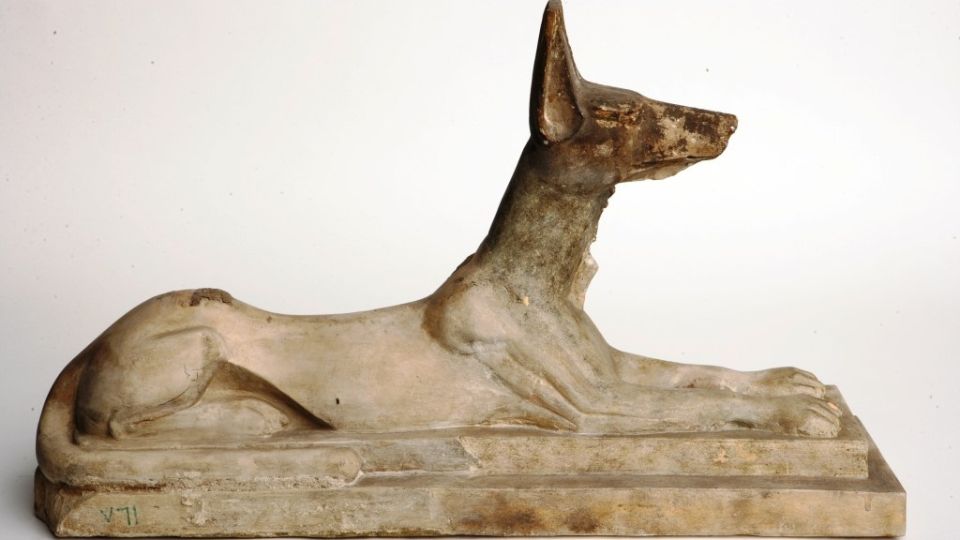Greyhounds originated from ancient Egypt around 4,000 years ago, where they were highly prized for their hunting prowess and elevated status, with evidence from tomb paintings and artifacts, and later spread to Greece and Rome around 500 BCE, making their way across Europe and being selectively bred into different types over time before becoming global as part of colonial expansions. In this article, we will explore the history and lineage of greyhounds, their introduction to Europe, and the development of the modern greyhound.
Ancient Origins: Greyhounds in Egypt and the Middle East
It’s believed that greyhounds first appeared in ancient Egypt, where they were held in high esteem by pharaohs and nobles. Evidence of their existence in this time and place can be found in:
- Tomb paintings: Depictions of greyhound-like dogs have been discovered in ancient Egyptian tombs, showcasing their importance in society.
- Egyptian artifacts: Greyhound-like figures have been found crafted onto various objects, signifying their revered status.
- Literary references: The oldest known written reference to greyhounds comes from the “Teaching of Kagemni,” an ancient Egyptian text dating back to around 1950 BCE.
Greyhounds eventually spread to other areas of the Middle East, often accompanying traders and merchants as they made their way across the region.
The Greyhound’s Journey to Europe: Greece and Rome
Around 500 BCE, greyhounds were introduced to Greece, where they quickly gained popularity due to their grace and speed. Greek greyhounds were known as “gazehounds” due to their keen gazes and strong hunting instincts.
In ancient Rome, greyhounds were admired for their speed and grace as well. As with the Greeks, Romans took part in the tradition of using greyhounds for hunting and racing. It’s believed that the Romans played a significant role in spreading greyhounds across Europe during their conquests.
The Development of the Modern Greyhound: Medieval Europe
As greyhounds made their way across Europe, various European societies began to develop their own types of greyhounds to suit their specific needs. For example:
- Spanish greyhounds, or Galgos: Bred in Spain for their hunting abilities, the Galgo is a breed with a similar appearance to the Greyhound but with some notable differences, such as a smaller frame and thicker coat.
- Irish greyhounds: Bred primarily for their agility and speed, Irish greyhounds are known for their long tails and rectangular heads. These dogs are the direct ancestors of the modern racing greyhound.
- English greyhounds: Developed in England, these dogs were traditionally used for hare coursing and later for greyhound racing. English greyhounds are the most popular type of greyhound, often associated with the breed as a whole.
As greyhounds continued to evolve, they gained recognition from nobility and royalty, becoming favored pets and status symbols. In Medieval England, for example, greyhounds were highly respected and considered the dogs of choice for kings and noblemen.
Role of Greyhounds in Historical Events and Culture
Throughout history, greyhounds played an essential role in various socio-cultural contexts.
- Medieval Europe: Laws were enacted to limit the ownership of greyhounds to the nobility. These were known as “Forest Laws,” and they restricted the hunting rights of commoners. Greyhounds, as premier hunting dogs, were therefore seen as status symbols.
- Renaissance England: There was a surge in greyhound popularity during the reign of Queen Elizabeth I (1558–1603). She was a noted greyhound enthusiast and even established the first rules for greyhound coursing, which contributed to greyhounds’ recognition as a racing breed.
- Irish Folklore: In Irish folklore, the greyhound is often portrayed as a heroic creature. The hero Cú Chulainn received his name, which translates to “Hound of Culann,” after he killed a guard dog and offered himself as a replacement until a new one could be trained.
Greyhounds Across the Globe: Distribution and Impact
Greyhounds began to spread around the globe, particularly during the colonial era. Here is an overview of some regions where they left a significant impact:
- Australia and New Zealand: Introduced by British colonizers, greyhounds were favored for their speed and hunting skills. They later became the popular choice for dog racing.
- North America: European colonists also brought greyhounds to North America, where they were used to help control the population of jackrabbits, coyotes, and other pests.
- South America: Greyhounds were introduced by Spanish and Portuguese colonists and gained popularity in hunting and sports such as lure coursing.
The following table provides some insight into the current geographical distribution of greyhounds worldwide.
| Continent | Estimated Number of Greyhounds |
|---|---|
| North America | 2 Million+ |
| Europe | 1 Million+ |
| Australia | 300,000+ |
| South America | 200,000+ |
| Asia | Data Unavailable |
| Africa | Data Unavailable |
Preservation Efforts and Modern Day Greyhounds
In contemporary times, greyhounds represent a beloved breed globally, known for their remarkable speed, elegant appearance, and gentle nature. Numerous organizations exist to ensure the preservation and well-being of greyhounds, including:
- The Greyhound Club of America: Founded in 1907, this is the oldest US breed club dedicated to Greyhounds.
- The National Greyhound Association (NGA): The NGA is a registry for racing greyhounds, which works closely with the American Greyhound Council to ensure animal welfare.
- Greyhound Rescue Organizations: There are numerous rescue organizations worldwide, like Greyhound Adoption Program and Greyhound Rescue Fife, which aim to rehome retired racing greyhounds.
Despite the modern greyhound’s reputation as a racing dog, many greyhounds are kept as pets due to their friendly and docile personalities, making them suitable companions for families. However, they’re also recognized for their shared history with the great pharaohs of Egypt – a testament to their origins and remarkable journey over thousands of years.




